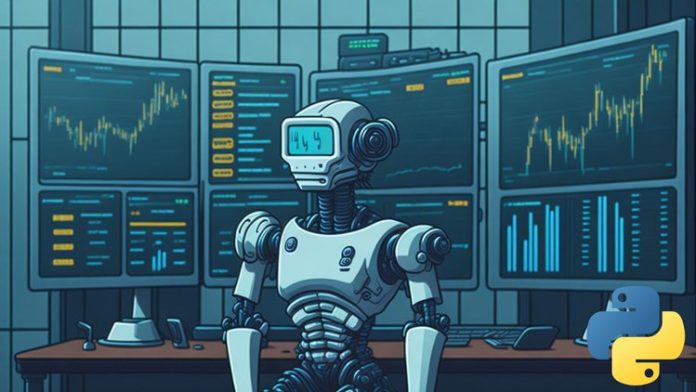Welcome to Forecasting Stock Market with ARIMA Model & Time Series course. This is a comprehensive project based course where you will be guided step by step on how to perform complex analysis and visualisation on stock market data, in addition, the course will be concentrating mainly on forecasting future stock prices using ARIMA model and implementing time series. For the programming language, we are going to use Python alongside several libraries like Pandas for performing data modelling, Numpy for performing complex calculations, and Matplotlib for visualising the data. In the introduction session, you will learn the basic fundamentals of stock market forecasting, such as getting to know factors that affect forecasting accuracy and models that will be used in forecasting. Then, continuing by learning the basic mathematics behind forecasting stock market, you will learn step by step on how to calculate moving averages manually. Not only that, you are also going to learn the mathematics behind the ARIMA model, there will be one comprehensive case study to teach you how to do manual calculation using the ARIMA model. Afterward, you will also learn several internal and external factors that could potentially impact the stock market, for example market sentiment, earning reports, and interest rates. Once you’ve learnt all necessary knowledge about stock market forecast, we will begin the project, firstly, you will learn how to set up Google Colab since that is the IDE that we are going to use, Then, you will also learn how to find and download stock market datasets from Kaggle. Once everything is all set, you will enter the main section of the course which is the project section where we are going to spend most of our time here, conducting experiments with the dataset. Lastly, at the end of the course, you also learn several metrics for evaluating forecasting model performance, such as Mean Absolute Error, Mean Squared Error, and Root Mean Squared Error, in addition, you will also learn how to implement those metrics on a simple dataset.
First of all, before getting into the course, we need to ask ourselves these questions: why should we learn to forecast the stock market? How are we able to know if the forecast is accurate? Well, in my opinion, there are many answers to those questions. Firstly, people have been investing in the stock market since a hundred years ago, therefore, this type of investment has been around for a long time. As the advancement of technology and big data nowadays, people started to realize that integrating big data technology into stock market investing is going to be extremely beneficial as it allows investors to identify patterns from the historical data to make a prediction about the future. Then, the next question might potentially be, how accurate is the forecast going to be? Well, there is no such thing as 100% accuracy. When it comes to forecasting the stock market, we use the data from the past to make a data driven investment decision. Nonetheless, no matter how convinced we are with a pattern from the historical data, there is still no 100% guarantee that the same exact pattern will repeat itself in the future. However, when you spot a repetitive trend or pattern in the data, it basically indicates there is a higher chance that the pattern will happen in the future and that is what the forecasting model is actually based on.
Below are things that you can expect to learn from this course:
- Learn basic fundamentals of stock market forecasting, such as getting to know factors that affect the forecasting accuracy and several forecasting models that will be used
- Learn how to calculate moving average
- Learn how to apply ARIMA (Autoregressive Integrated Moving Average) model into simple dataset and do the basic forecasting
- Learn several internal and external factors that can potentially impact stock market
- Learn how to find and download datasets from Kaggle
- Learn how to upload data to Goolge Colab Studio
- Learn how to clean the dataset by removing missing values and duplicate values
- Analysing & visualising average highest & average lowest stock price per year
- Analysing & visualising average volume
- Finding correlation between volume & price changes
- Calculating 100 days moving average
- Analysing & visualising volatility
- Learn how to analyse autocorrelation function & partial autocorrelation function
- Learn how to perform forecasting using ARIMA model
- Learn how to perform residual analysis
- Learn how to do forecasting model evaluation by calculating MAE (Mean Absolute Error), MSE (Mean Squared Error), and RMSE (Root Mean Squared Error)




















![[100%OFF]Improve Your American Accent – The K Method Accent Reduction](https://oyoads.in/wp-content/uploads/2020/05/20200503_200813-218x150.jpg)



![[100% Free]Python Bootcamp 2020 Build 15 working Applications and Games (31.5 Hours)](https://oyoads.in/wp-content/uploads/2020/05/Python-Bootcamp-2020-Build-15-working-Applications-and-Games-1-100x70.jpg)

![[100% Free]Java Programming: Complete Beginner to Advanced](https://oyoads.in/wp-content/uploads/2020/05/IMG_20200519_054150_522-100x70.jpg)
